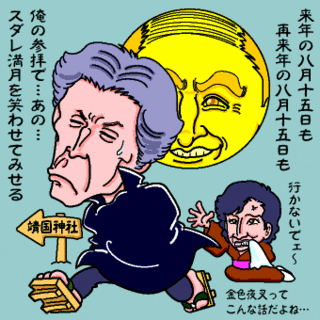
Four uyoku ("right-wing," often with the connotation of extreme neo-nationalism) protesters were
arrested in Tokyo on Friday for allegedly slandering the high priest of the
Meiji Shrine near Harajuku. They apparently slandered the priest for embezzlement, though the claims remain unsubstantiated. Their motive for riding around downtown Tokyo in trucks launching ad hominem attacks via megaphone was apparently a shrine display that included the Japanese phrase refering to Emperor Meiji as "his highness"--as opposed to the desired "his majesty."
Past campaigns of these uyoku groups have included
banning a cultural reference to the 1937 Nanjing Massacre and the
return of the emperor to power. According to a 1996 police estimate, the uyoku consist of over 1000 groups with in excess of 100,000 members.

These fascist groups are nothing new. Perhaps the best known uyoku story is that of famed author (and
Bataillean?)
Mishima Yukio's brown-shirted private army, the

Tatenokai, established in 1968. In November 1970, the Tatenokai
staged a coup, attempting to overthrow the constitutional government and reinstate the emperor, wholly of their own volition. After taking a general hostage, Mishima demanded that the military hear him out. The soldiers met his fanaticism with laughter, and he proceeded to commit
seppuku, or ritual disembowlment. Per his request, he was then decapitated by fellow Tatenokai member Morita Masakatsu, rumored to be Mishima's lover.





















